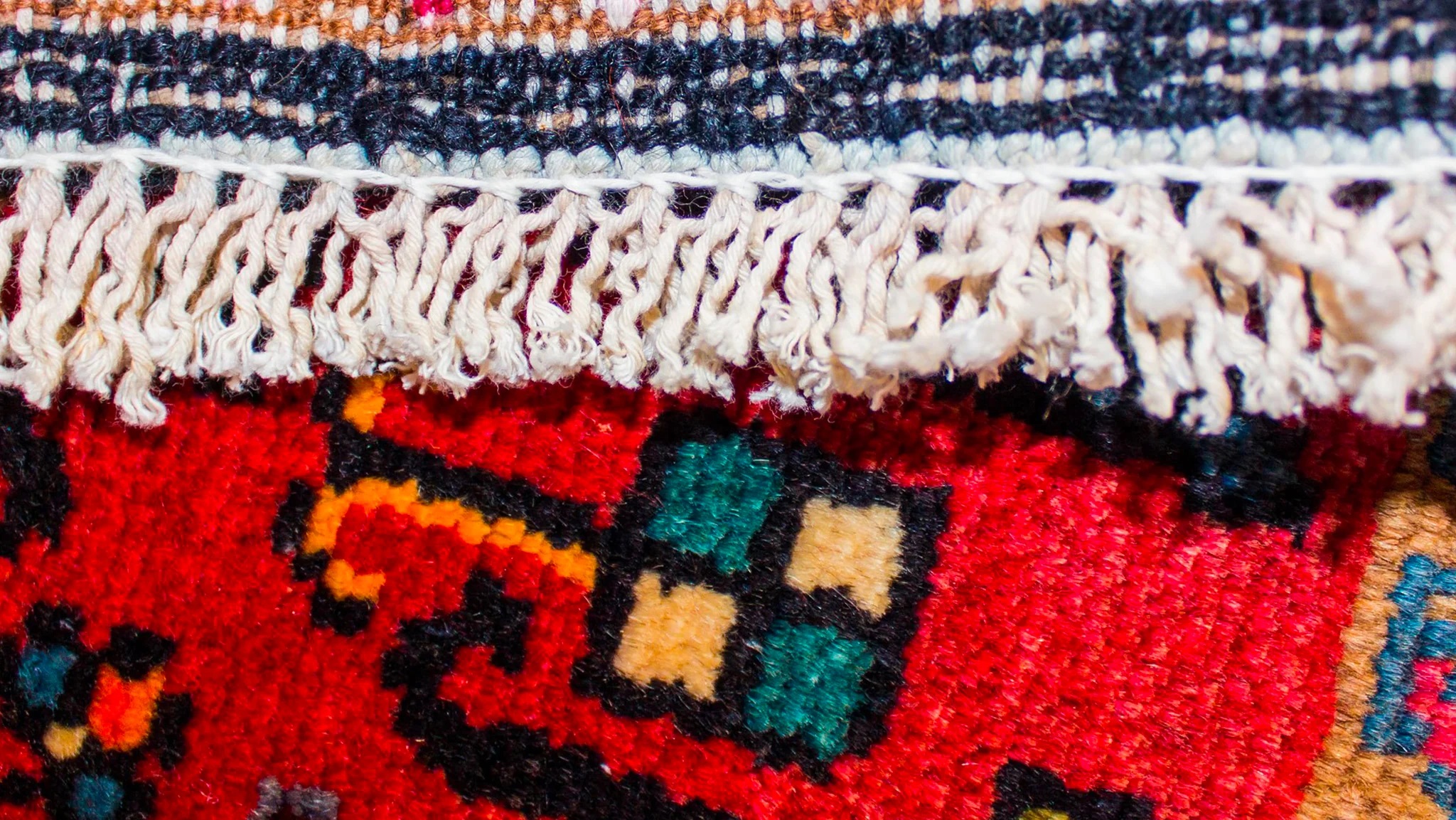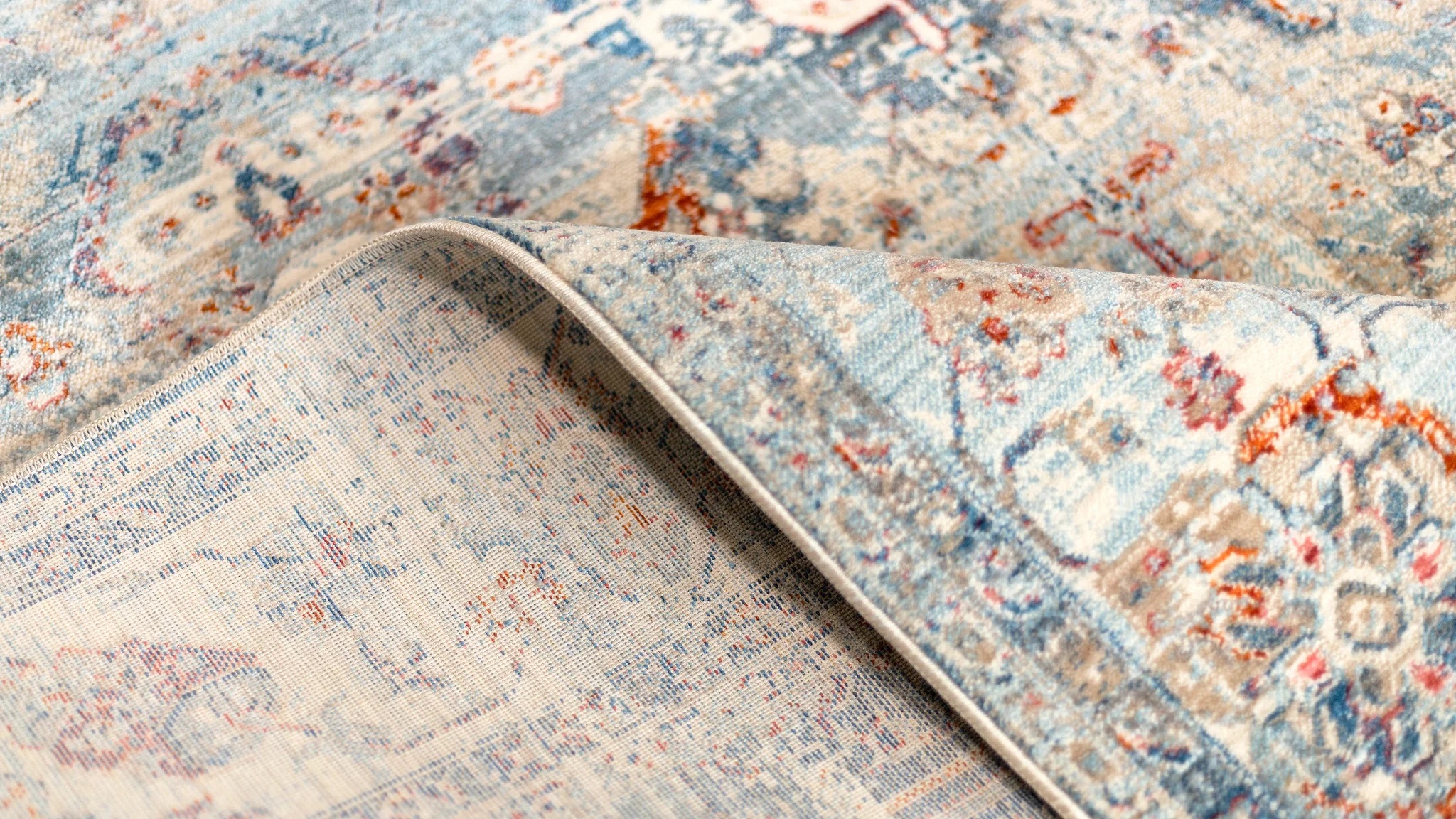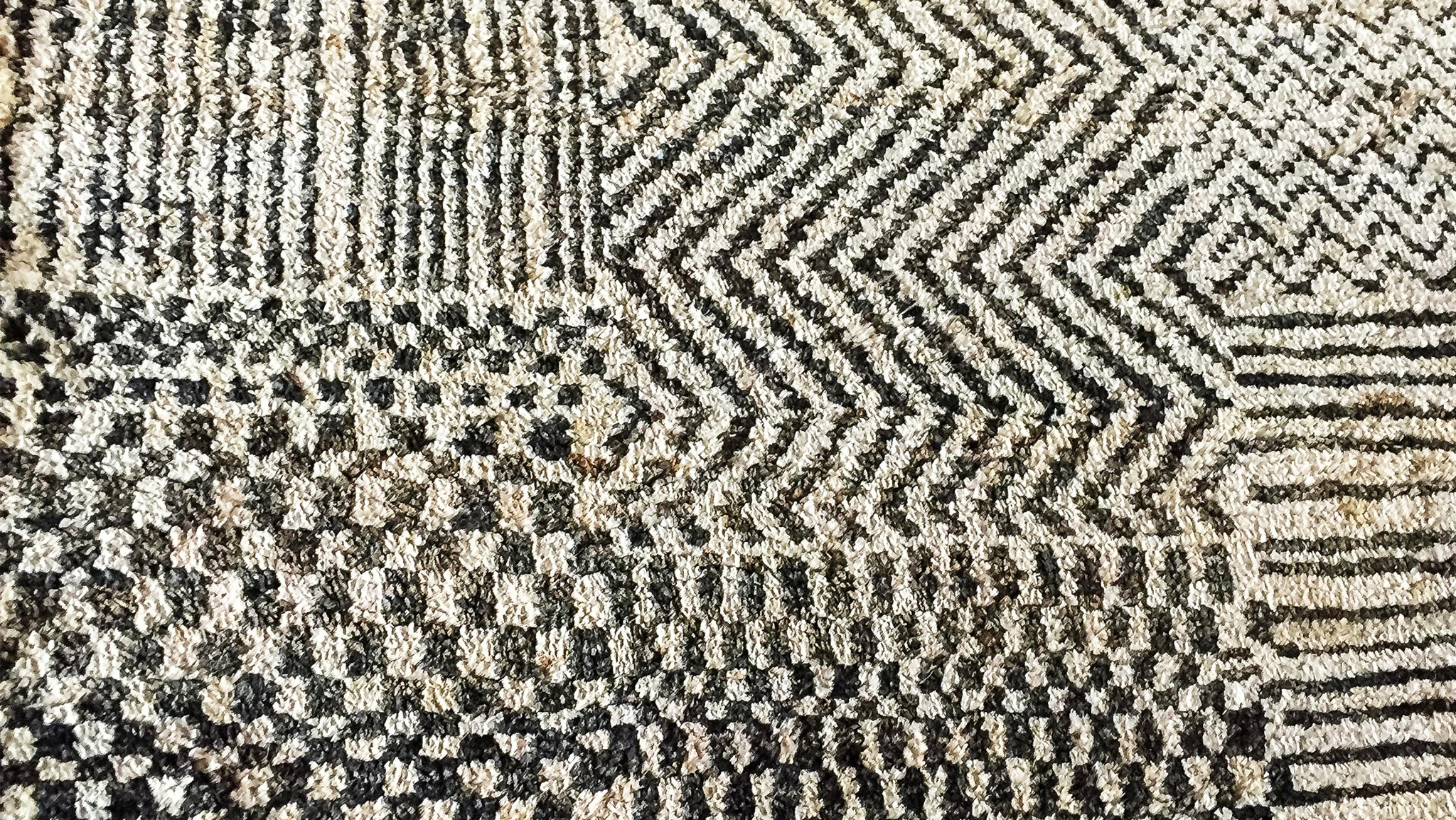Rug Materials: Pros and Cons of Each Fiber
- Home
- Tabrizi Rugs Blog
- Rug Materials: Pros and Cons of Each Fiber

There are many factors to consider when rug shopping. Between size, style, and placement, there is an endless array of options to think about. But one of the most important choices you'll need to make is the rug's material.
Each rug material has its own advantages, but how do you pick the rug that's right for you? What are the pros and cons of natural rug fibers and synthetic rug fibers? Below is a comprehensive guide to each type of material that we use in our rugs. For a broader overview of natural vs. synthetic rugs, check out our showdown here.


Wool Rugs
Thousands of years of weaving history proves that wool is the best fiber you could ask for in a rug. It dyes vividly, it's strong, and always washes beautifully. If you have one, you also know that it can last for generations. In fact, it's not unlikely to come across a hand-woven wool rug made before the 1800s still looking good as new. Super-quality wool used in genuine Persian rugs are also often the most comfortable. That level of quality and comfort is worth the investment.
Pros of wool rugs:
- Durable. Wool rugs will last for years and can handle the significant weight. The fibers and springy and don't wear down easily, so it's perfect for areas with high foot traffic.
- Soft. Wool is perhaps the softest rug material on the market.
- Insulation. Great for heating up cold rooms and absorbing sound in empty spaces.
- Color. It absorbs dye beautifully, making it available in a range of shades.
- Stain-resistant. Wool's natural coating repels some stains.
Cons of wool rugs:
- Absorbent. Wool is not well-suited for extremely humid and moist areas.
- Shedding. There may be some at the beginning, but this reduces over time.
Shop our curated collection of wool rugs.


Silk Rugs
Bring an exotic touch to your space with a silk rug. The beautiful sheen reflects light in a way that gives its colors enchanting luminescence. Silk is sometimes combined with wool to create the ultimate soft, luxury rug, but there are plenty of pure-silk options as well.
Pros of silk rugs:
- Luxury. The sheen that silk provides makes it the perfect choice for an exquisite feature piece in any room, but it's best suited for low-traffic areas. Place it in an alcove or reading corner to embellish the space, making it stand out from the rest of the room.
- Detailed designs. Silk allows for more intricacy - ideal when you want something with fine, ornate detail.
- Strong. Silk is one of the strongest natural fibers on earth.
- Soft and safe. That's why it's so great for making clothing and despite its texture, it's not slippery.
- Color. Silk rugs are available in numerous shimmering shades.
Cons of silk rugs:
- Maintenance. Silk is not stain-resistant. It also required professional cleaning (which does not involve hot water or steam).
- Price. As a finer material, the work and cost that goes in to making silk rugs gives them a higher price tag.
- Footprints. They may show on silk rugs.
Shop our curated collection of silk rugs.


Polypropylene (heatset PP, olefin, and polyester) Rugs
Polyester, polypropylene, olefin are similar synthetic fibers made to mimic the look and feel of a wool rug at a lower cost.
Pros of polypropylene rugs:
- Inexpensive. Heatset PP rugs are woven by machines at scale.
- Comfortable. The texture and feeling of olefin is engineered to perfection.
- Naturally stain resistant (except for oil-based stains).
- Maintenance. Easily washable.
- Durability. With proper care, these rugs are made to last and resist fading from sunlight.
Cons of polypropylene rugs:
- Poor resistance to abrasion or crushing.


Cotton Rugs
Pros of cotton rugs:
- Easy to clean. Cotton rugs are often machine-washable, making them a great choice for messy areas like kitchens.
- Soft. Cotton provides an extremely comforting sensation for your feet.
- Lightweight. Breathable and easy to move around.
- Price. More affordable than wool but still high-quality.
Cons of cotton rugs:
- Durability. Cotton may wear out faster than wool.
Shop our curated collection of cotton rugs.


Hemp Rugs
Humans have been cultivating hemp plants for numerous purposes for thousands of years. The plant grows easily and quickly, making it a sustainable choice for textiles.
Pros of hemp rugs:
- Hypoallergenic. Family members or guests with allergies should be safe around this type of rug.
- Durable. Hemp is extremely strong, so it's suitable for high-traffic areas.
- Color. Hemp takes dye well, giving you more options than some other natural fibers.
- Environmentally friendly. The hemp plant produces a large quantity of oxygen per square acre (more than some tree species). This is great for us, our planet, and wildlife.
- Mildew-resistant. Mildew is a type of mold which is notorious for being difficult to remove. With a hemp rug, you won't need to worry about that as much.
Cons of hemp rugs:
- Initial comfort. Hemp rugs soften over time. If it doesn't feel perfect to begin with, it will eventually.
- Shedding. Be sure to vacuum often.
- Vibrancy. Hemp is usually not dyed as bright as other materials.
Shop our curated collection of hemp rugs.


Jute Rugs
Jute is the plant that's used to make hessian cloth. It grows in countries near the equator, including India and Bangladesh, and its stalks are spun and weaved. It's a versatile fabric, used for making outdoor baskets and cushions, flour sacks, and more.
Pros of jute rugs:
- Color. If you want an earthy feel, jute's natural tone is perfect. It can also be dyed in vibrant shades.
- Sustainable. Jute is a renewable fiber that makes it sustainable to produce.
- Price. It's generally more affordable than wool or cotton.
Cons of jute rugs:
- Absorbent. Not suitable for use in extremely humid areas.
- Staining. It's not the most stain-resistant fiber, but if you clean up spills before they have a chance to sink in, you should have no problem in keeping jute rugs in top condition.
- Durability. Jute should be used in medium- to low- traffic areas.
Shop our curated collection of jute rugs.


Leather Rugs
If you're not looking for a vegan rug, leather is another option. Like silk, this rug material adds a luxurious, sophisticated touch to a room, making it a great choice for offices or formal living and dining areas.
Pros of leather rugs:
- Soft. The smooth surface of leather adds to its luxury.
- Durable. While leather is durable on its own, it's often mixed with other fabrics to enhance it, like wool and cotton.
Cons of leather rugs:
- Cleaning. Avoid using detergent or soap, as it may remove color. The main issue with leather is that moisture can damage the fabric. When cleaning, make sure to gently wipe off stains with a damp cloth and don't let it get too wet. To keep leather rugs in top condition, use a conditioner every 6-12 months.
Shop our curated collection of leather rugs.
The Bottom Line
Of course, the rug's material is only one factor to consider - you'll also need a rug that fits your size, style, budget, and overall preference.
- If you're looking for the most reliable and durable material, choose a wool rug.
- If you're willing to invest in a finer material that will reward you with every step you take on it, choose a silk rug.
- If you're searching for the perfect balance between quality and price, choose a synthetic rug like heatset PP or polyester.
- For the most sustainable and natural options, choose a hemp or jute rug.
We specialize in hand-picking rugs from around the world in both natural and synthetic materials. We encourage you to experiment and discover what works for you and your home, depending on your space and of course your preference. Have fun shopping and we'll be here to help every step of the way.
Categories
Recent Posts

 US ($USD)
US ($USD) 